The most common type of wallboard is drywall, also known as sheetrock, but there are many alternatives, including lath and plaster, paneling, plastic sheeting, fiberboards, and tile. Drywall is by far the best solution for residential construction.
Hanging Drywall
Drywall is a paper wrapped gypsum product, manufactured by companies like the National Gypsum Company. You can find detailed information about the different types of gypsum wallboard used in construction on their website.
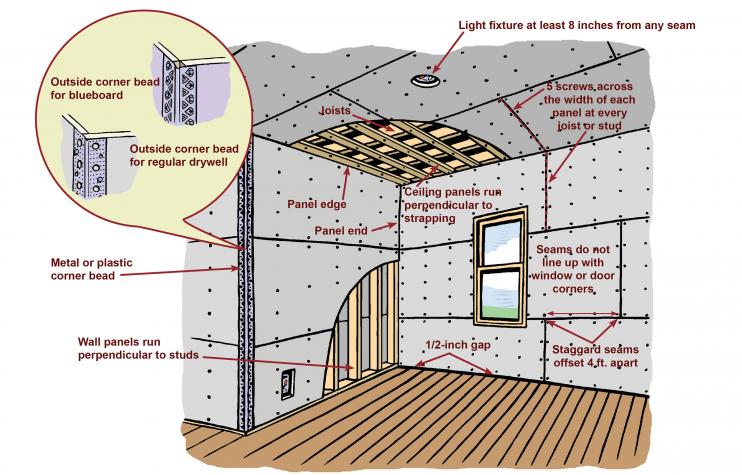
Residential drywall is typically four by eight feet and 1/2” thick, but it’s also available in ten foot lengths and as a 5/8” thick Type X material for areas that require fire resistance.
Starting with the ceilings, the wallboard is lifted into place with a panel hoist and attached with specially designed drywall screws.

The gypsum boards are screwed to the wall studs. Galvanized metal corner beads are used to seal corners, as well as the door and window frames.
.
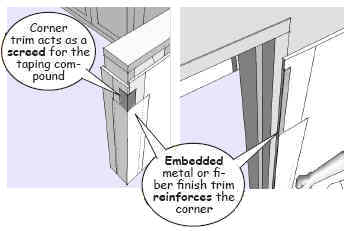
Alternate corner and edge trims include "L" or "J" plastics and structurally laminated materials for special conditions.
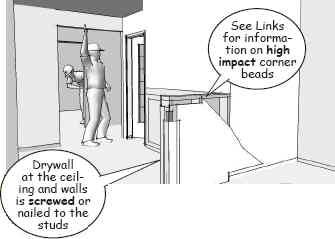
Finishing Drywall
The corner beads act as screeds for alternating layers of a drywall joint compound, also known as “mud.” Joints or seams between the drywall boards are “taped” using paper strips embedded in the same joint compound.
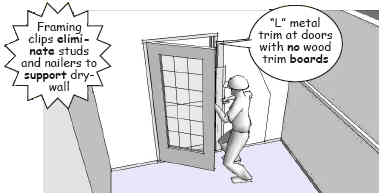
The joint compound is applied in layers over the taped seams, corner trim, and drywall screws. It’s important that the drywall screws dimple the board and not penetrate the paper skin.
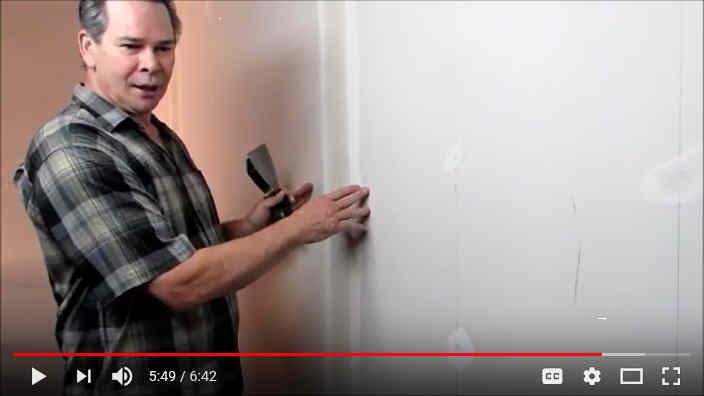
Taping is not difficult, but it’s a technique that takes practice. For more information, see Dean's drywall tips for an overview of the tools used to finish the drywall.
Paneling and tile
Paneling is installed over taped but unfinished drywall in high impact areas like dining alcoves, stairways, and playrooms that are likely to get bumped or scratched by furniture and heavy use.
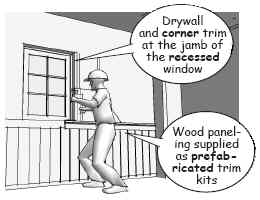
A special wax coated “green” drywall is often used in wet areas, but cement backer boards are used behind areas to be tiled, such as showers or baths.
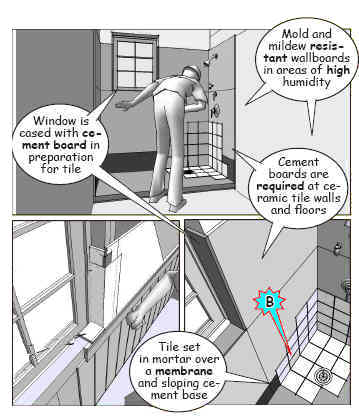
Because drywall is essentially a porous material, local building codes govern construction details to control moisture and prevent long term mold and mildew damage.
.
.
(To be continued…)
---------------------------
The material presented in this series has been taken from our book, “How a House is Built: With 3D Construction Models” The book includes annotated illustrations, captioned text, videos, models, and the 2D Preliminaries.
 youtube.com/watch?v=xZj19OPzE08
youtube.com/watch?v=xZj19OPzE08

No comments:
Post a Comment